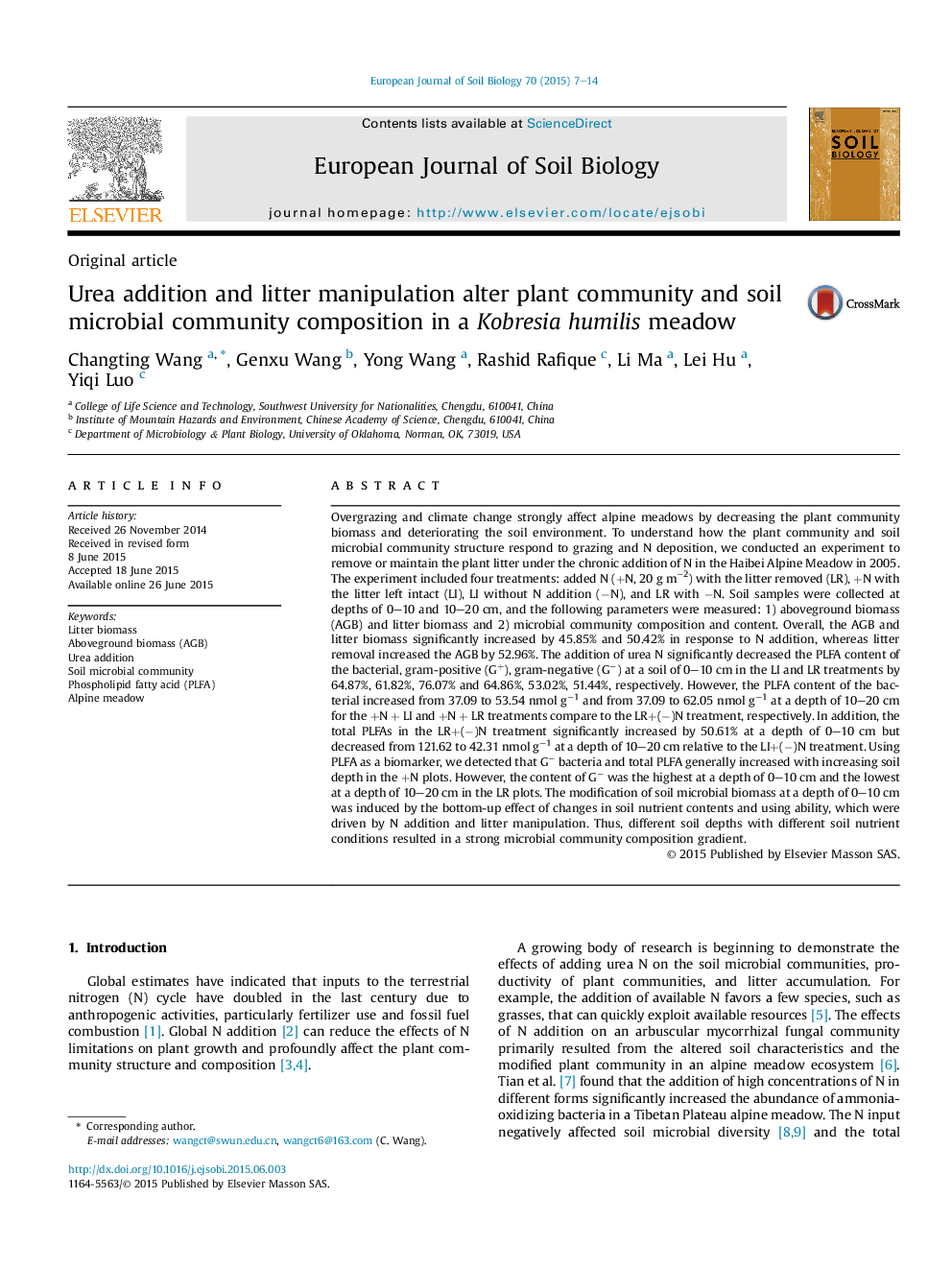| کد مقاله | کد نشریه | سال انتشار | مقاله انگلیسی | نسخه تمام متن |
|---|---|---|---|---|
| 4391731 | 1618122 | 2015 | 8 صفحه PDF | دانلود رایگان |

• Urea N addition significantly decreased microbial PLFAs content at a depth of 0–10 cm.
• PLFAs content increased at a depth of 10–20 cm in the +N + LI and +N + LR treatments.
• G− Bacteria and total PLFAs generally increased with increasing soil depth in the +N plots.
Overgrazing and climate change strongly affect alpine meadows by decreasing the plant community biomass and deteriorating the soil environment. To understand how the plant community and soil microbial community structure respond to grazing and N deposition, we conducted an experiment to remove or maintain the plant litter under the chronic addition of N in the Haibei Alpine Meadow in 2005. The experiment included four treatments: added N (+N, 20 g m−2) with the litter removed (LR), +N with the litter left intact (LI), LI without N addition (−N), and LR with −N. Soil samples were collected at depths of 0–10 and 10–20 cm, and the following parameters were measured: 1) aboveground biomass (AGB) and litter biomass and 2) microbial community composition and content. Overall, the AGB and litter biomass significantly increased by 45.85% and 50.42% in response to N addition, whereas litter removal increased the AGB by 52.96%. The addition of urea N significantly decreased the PLFA content of the bacterial, gram-positive (G+), gram-negative (G−) at a soil of 0–10 cm in the LI and LR treatments by 64.87%, 61.82%, 76.07% and 64.86%, 53.02%, 51.44%, respectively. However, the PLFA content of the bacterial increased from 37.09 to 53.54 nmol g−1 and from 37.09 to 62.05 nmol g−1 at a depth of 10–20 cm for the +N + LI and +N + LR treatments compare to the LR+(−)N treatment, respectively. In addition, the total PLFAs in the LR+(−)N treatment significantly increased by 50.61% at a depth of 0–10 cm but decreased from 121.62 to 42.31 nmol g−1 at a depth of 10–20 cm relative to the LI+(−)N treatment. Using PLFA as a biomarker, we detected that G− bacteria and total PLFA generally increased with increasing soil depth in the +N plots. However, the content of G− was the highest at a depth of 0–10 cm and the lowest at a depth of 10–20 cm in the LR plots. The modification of soil microbial biomass at a depth of 0–10 cm was induced by the bottom-up effect of changes in soil nutrient contents and using ability, which were driven by N addition and litter manipulation. Thus, different soil depths with different soil nutrient conditions resulted in a strong microbial community composition gradient.
Journal: European Journal of Soil Biology - Volume 70, September–October 2015, Pages 7–14